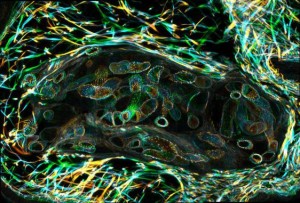
As the creator of Out of Time, I work across media. My novel is in its second draft now, drawn from the original screenplay. I started tweeting the story–line-by-line as is the most conventional practice in #TwitterFiction–until our heroine, Charley, took over the narrative. Her solution to tweet storytelling was to ask questions of the experts, to invite others to help advance the story, and to ask a lot of questions. In fact, it is her curiosity is one of her most ingratiating character traits.
As a transmedia storyteller, I recognize that reading is not every teen’s cup-of-tea. Interestingly, there is a hot debate going on about this right now. it seems that boys are reading less-and-less. There is some argument to be made over what stories boys are most likely attracted to, and how those different from girls’ interests. Some would say that boys a more likely to engage in action-oriented narrative nonfiction, while girls are attracted to stories about relationships–whether in fiction or nonfiction. And if more YA fiction features female protagonists, does that automatically deter close to 50 percent of the teen universe from reading?
In my world Out of Time, I encounter a paradoxical problem: girls are far less likely than boys to pursue the studies in science, math, engineering and technology–the so-called STEM fields–that will prepare and qualify them for the best, highest paying and most in-demand careers. Whether the STEM application is for engineering bridges in repairing our infrastructure or building apps that run the next Uber, or design the first successful SpaceX rockets, girls are less likely to pursue studies that will launch them into career orbit.
Naturally, my protagonist Charley is a girl. Her interest in building Leonardo’s time machine–and acquiring the skills and knowledge to make it happen–is, apparently, a rarity in girls but, through the story, perhaps she will inspire the next generation of girls to pursue their own passions to create, discover, design, build and make work…in whatever their passion might be.
So I hope to test if story, and a smart, sassy girl as a role model, can’t inspire some girls to follow Charley’s lead. BUT, since this is a story, I am also hoping that boys will be interested enough to read and follow her adventures–in whatever medium most engages their interest.
If this passion is ignited through reading a novel, so be it. If film is the more engaging medium, I say, let’s go for it. For today’s young people, if you’re not on social media, you practically don’t exist. Video games? Plans for a video game and an app are in the cards. Underlying the whole narrative is a personalized learning platform, where young people can engage, through the story, in following their own interests to learn more across disciplines.
If Leonardo da Vinci could dream it, kids engaging with learning on Out of Time Media can pursue it.

For an artist, this transdisciplinary learning might mean combining art and anatomy. A kid inspired to be a doctor could, likewise, come to appreciate art through the study of biology. For a musician, hearing the music of the cosmos. When it comes to a politics buff…well, one could glean a lot about present-day governing and politics from Machiavelli or Lorenzo di Medici.
Did you know they burned books in Leonardo’s day? The original bonfires of the vanities were supposed to “purge” society of the evils of worshiping material possessions. They were really intended to keep people ignorant of wide advances in art, culture and science. While the printed page was still a newfangled invention in the fifteenth and sixteenth centuries (and railed against as leading to the downfall of civilization!), knowledge and human advancement could not be stopped. The world could not go back into darkness. Similarly, today’s plethora of new media can be expected to lead to a Renaissance of learning to open new worlds of discovery that we can only imagine.
Whether boys–and girls–read from books would seem to be besides the point. They will–we will–always engage with stories, in any medium, because they allow us to connect to each other, to explore new worlds, and to reach for the stars.
